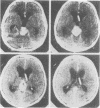Abstract
The major studies of the effects of callosal section in humans have been conducted in severe epileptic patients in whom commissurotomy has been performed for management of intractable seizures. In spite of the evidence which has been amassed it is possible to criticise the results, on the grounds that all patients had seizures for many years prior to surgery and hence it is conceivable that some adaptive reorganisation of the epileptic brain might account for the different behaviour of the two hemispheres. Specifically, since the primary epileptic focus and its possible underlying focal damage are often asymmetric, one hemisphere might have had to adapt to the functional deficit of the other and thereby produce the basis for the unusually striking hemispheric differences. The answer to these reservations must come from the study of non-epileptic subjects who undergo some form of commissurotomy for reasons other than treatment of seizures, particularly if the intervention involves the posterior third of the corpus callosum, the sector considered responsible for the more remarkable "disconnection" signs. Only seven such cases have been reported. Here we report findings in a non-epileptic and previously normal 16-year-old boy who underwent section of the splenium for exploration of a pineal tumour. Our results indicate that surgical section of the splenium produced visual disconnection signs comparable to those seen in epileptic patients with complete commissurotomy.
Full text
PDF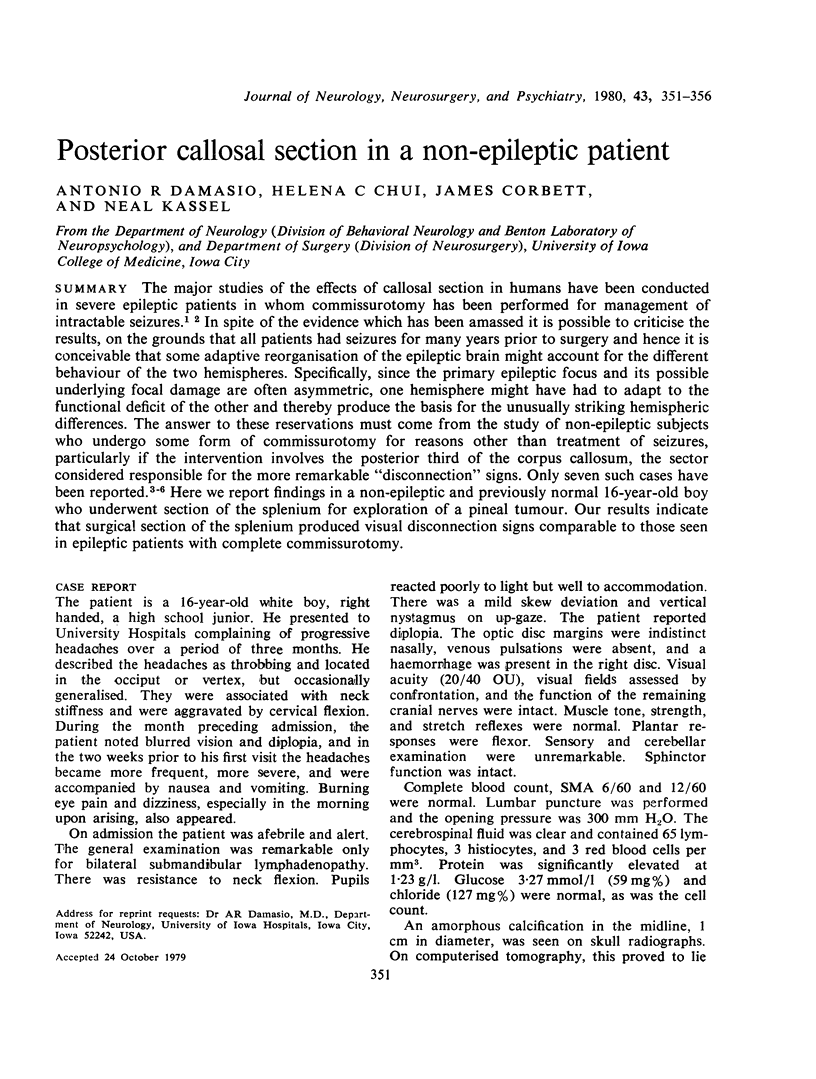
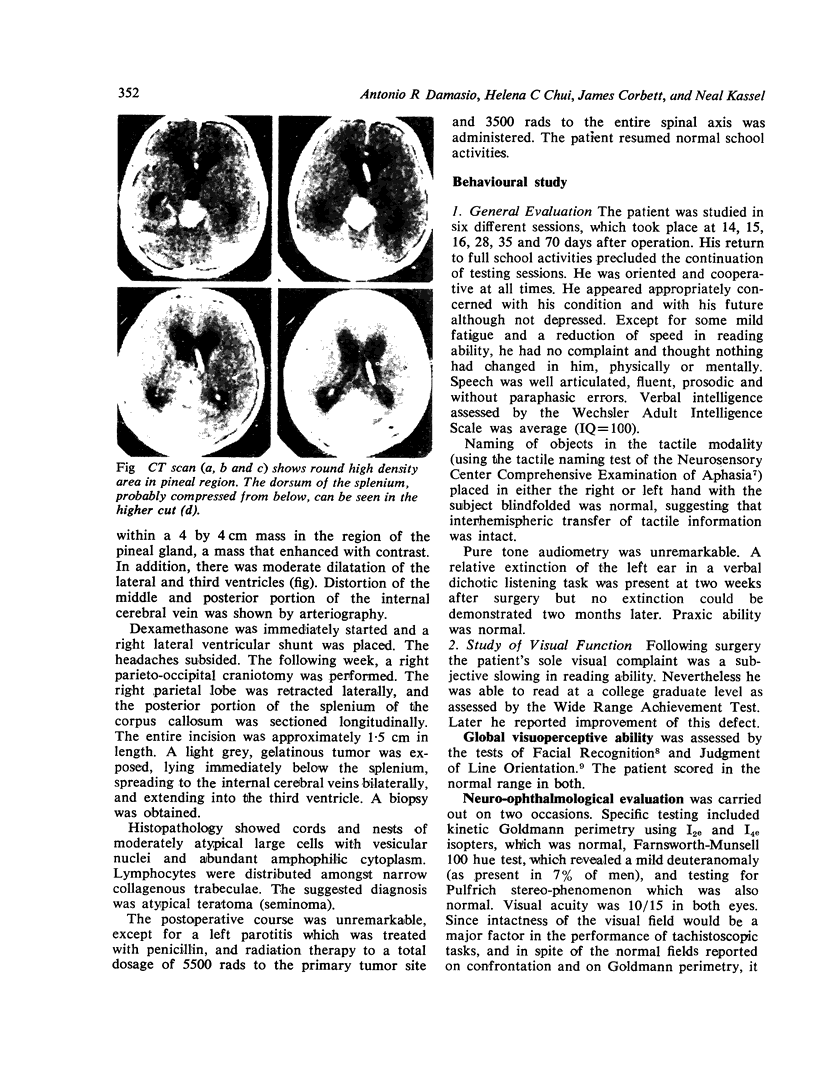
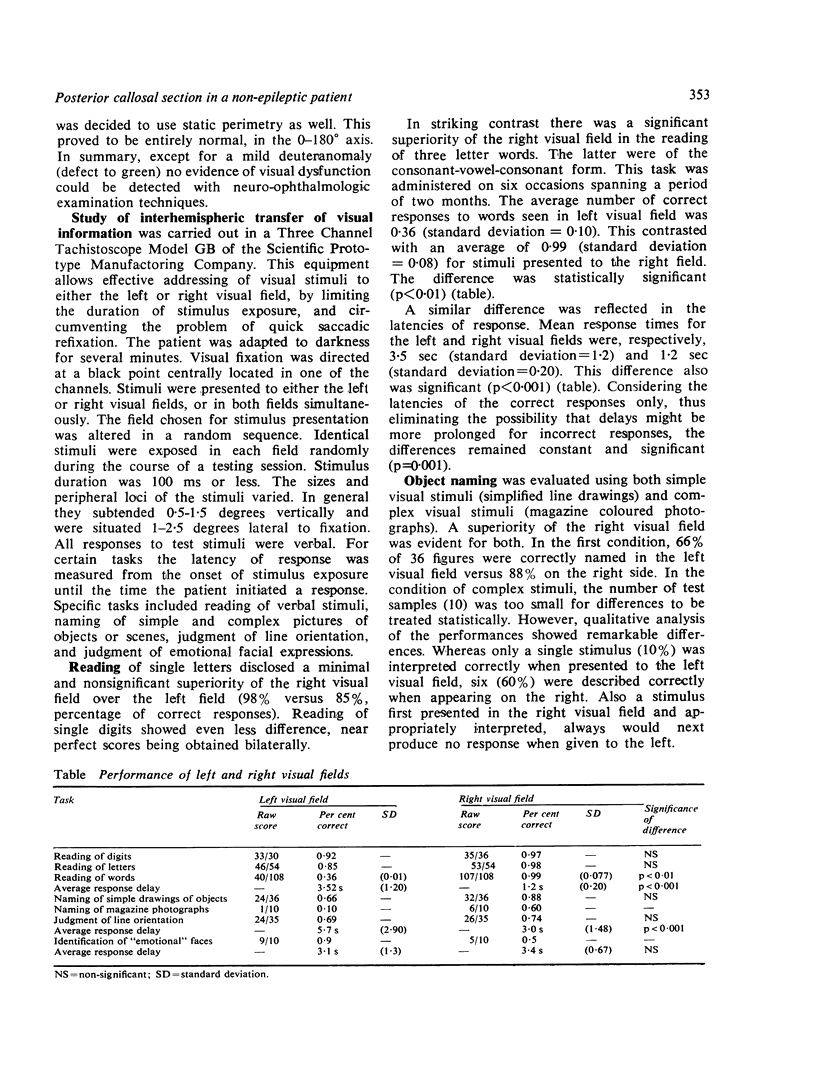
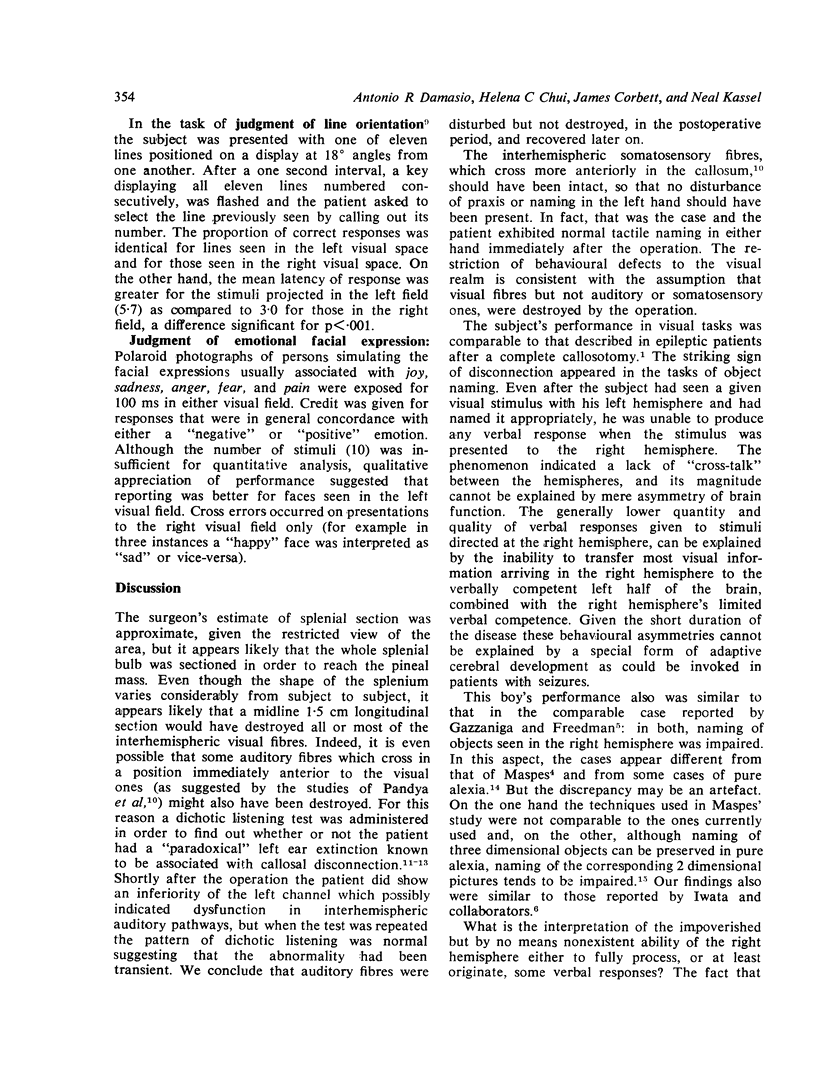
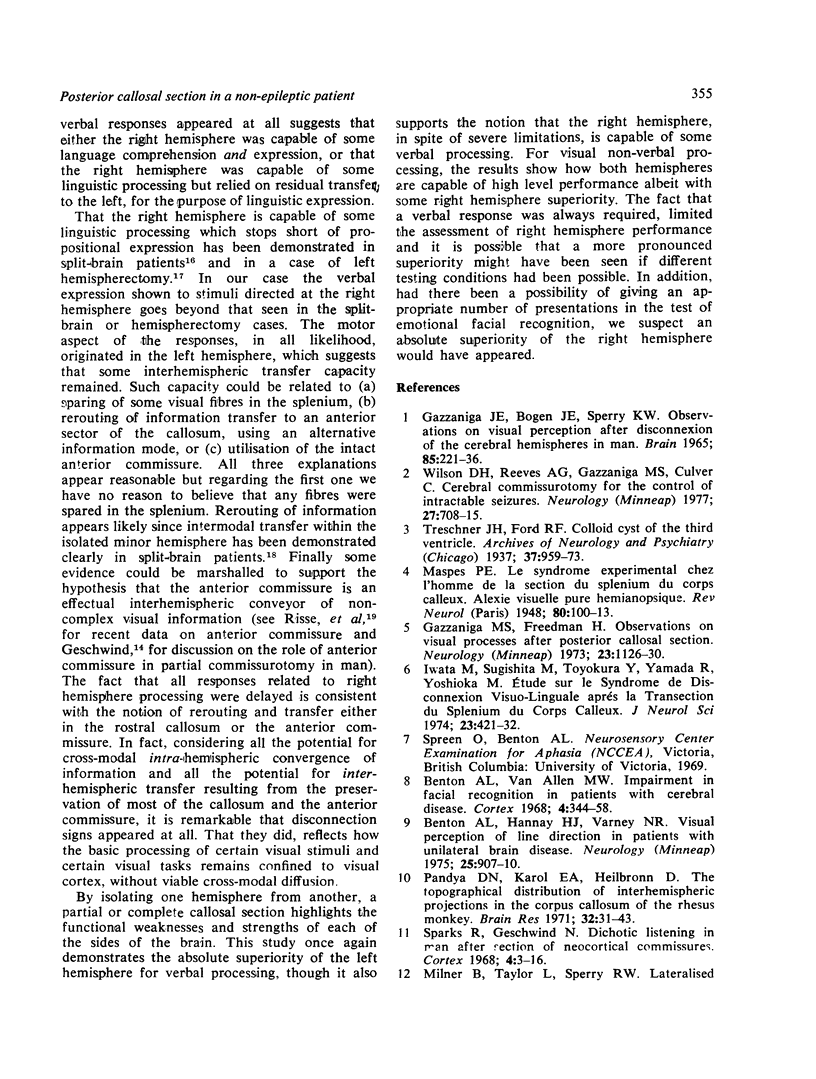
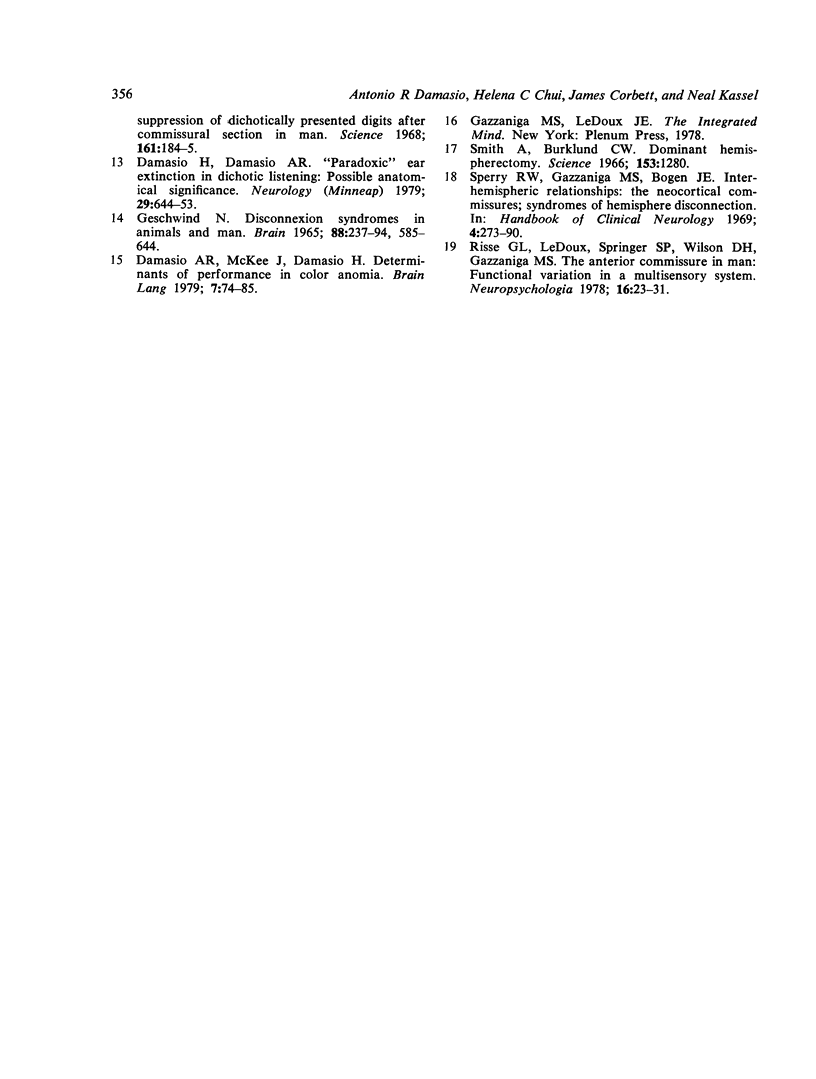
Images in this article
Selected References
These references are in PubMed. This may not be the complete list of references from this article.
- Benton A., Hannay H. J., Varney N. R. Visual perception of line direction in patients with unilateral brain disease. Neurology. 1975 Oct;25(10):907–910. doi: 10.1212/wnl.25.10.907. [DOI] [PubMed] [Google Scholar]
- Damasio A. R., McKee J., Damasio H. Determinants of performance in color anomia. Brain Lang. 1979 Jan;7(1):74–85. doi: 10.1016/0093-934x(79)90007-5. [DOI] [PubMed] [Google Scholar]
- Damasio H., Damasio A. "Paradoxic" ear extinction in dichotic listening: possible anatomic significance. Neurology. 1979 May;29(5):644–653. doi: 10.1212/wnl.29.5.644. [DOI] [PubMed] [Google Scholar]
- Gazzaniga M. S., Bogen J. E., Sperry R. W. Observations on visual perception after disconnexion of the cerebral hemispheres in man. Brain. 1965 Jun;88(2):221–236. doi: 10.1093/brain/88.2.221. [DOI] [PubMed] [Google Scholar]
- Gazzaniga M. S., Freedman H. Observations on visual processes after posterior callosal section. Neurology. 1973 Oct;23(10):1126–1130. doi: 10.1212/wnl.23.10.1126. [DOI] [PubMed] [Google Scholar]
- Geschwind N. Disconnexion syndromes in animals and man. I. Brain. 1965 Jun;88(2):237–294. doi: 10.1093/brain/88.2.237. [DOI] [PubMed] [Google Scholar]
- Iwata M., Sugishita M., Toyokura Y., Yamada R., Yoshioka M. Etude sur le syndrome de disconnexion visuo-linguale après la transection du splénium du corps calleux. Troubles de la verbalisation des informations visuelles dans l'hémisphère mineur. J Neurol Sci. 1974 Nov;23(3):421–432. doi: 10.1016/0022-510x(74)90159-2. [DOI] [PubMed] [Google Scholar]
- Milner B., Taylor L., Sperry R. W. Lateralized suppression of dichotically presented digits after commissural section in man. Science. 1968 Jul 12;161(3837):184–186. doi: 10.1126/science.161.3837.184. [DOI] [PubMed] [Google Scholar]
- Pandya D. N., Karol E. A., Heilbronn D. The topographical distribution of interhemispheric projections in the corpus callosum of the rhesus monkey. Brain Res. 1971 Sep 10;32(1):31–43. doi: 10.1016/0006-8993(71)90153-3. [DOI] [PubMed] [Google Scholar]
- Risse G. L., LeDoux J., Springer S. P., Wilson D. H., Gazzaniga M. S. The anterior commissure in man: functional variation in a multisensory system. Neuropsychologia. 1978;16(1):23–31. doi: 10.1016/0028-3932(78)90039-8. [DOI] [PubMed] [Google Scholar]
- Smith A., Burklund C. W. Dominant hemispherectomy: preliminary report on neuropsychological sequelae. Science. 1966 Sep 9;153(3741):1280–1282. doi: 10.1126/science.153.3741.1280. [DOI] [PubMed] [Google Scholar]
- Wilson D. H., Reeves A., Gazzaniga M., Culver C. Cerebral commissurotomy for control of intractable seizures. Neurology. 1977 Aug;27(8):708–715. doi: 10.1212/wnl.27.8.708. [DOI] [PubMed] [Google Scholar]



